The East landmarks granted listed status in 2024
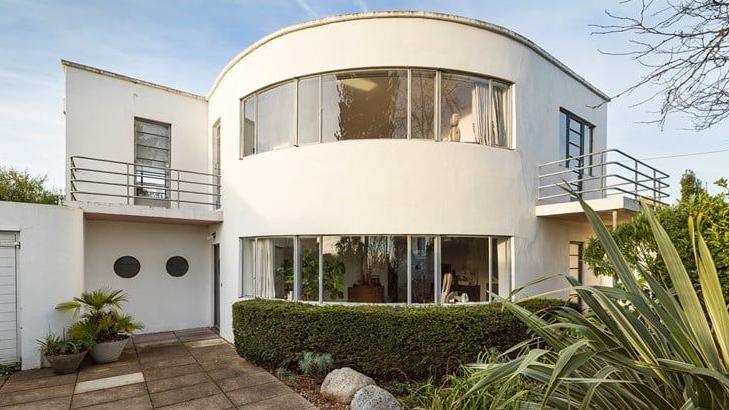
A former show house, built in 1934 in the Essex resort of Frinton-on-Sea, aimed to introduce modernist architecture to ordinary home owners
- Published
A modernist 1930s home built to showcase an ambitious housing estate that never properly took off the ground has been one of the landmark examples in the region to be deemed nationally important this year.
The distinctive curved house in Frinton-on-Sea, Essex was one of the 71 standout buildings and sites across the East of England added to the National Heritage List.
It has meant the building will be legally protected and preserved for future generations to learn from and enjoy.
The heritage scheme, operated by Historic England, has more than 400,000 places listed for their architectural or historic interest - and these include new entries for Cambridgeshire, Essex, Norfolk, Northamptonshire and Suffolk.
Cambridge's modern college

The lantern at Fitzwilliam College's Central Hall boasts arched glazing and white hoods and was designed by Sir Denys Lasdun
A 20th Century Cambridge college building was among the sites this year to be recognised for its importance.
Fitzwilliam College's Chapel, New Court and Central Hall buildings were granted Grade II status in the summer.
Sir Denys Lasdun - best known for London's National Theatre - designed the dining hall, kitchens and various communal spaces, including the Central Hall Building, between 1960 and 1963.
Accommodation block New Court and the Chapel were then added respectively in the 1980s and 1990s by architects MacCormac, Jamieson and Prichard (MJP), who complemented Sir Denys' vision.
Historic England said the architects all showed "extraordinary creativity".
This included the Hall's gravity-defying lantern; a worship space resembling a floating ship and New Court's stepped design where each floor has a different appearance inside and out.
Fitzwilliam moved from a site opposite the Fitzwilliam Museum to north Cambridge in the 1960s.
Essex show home
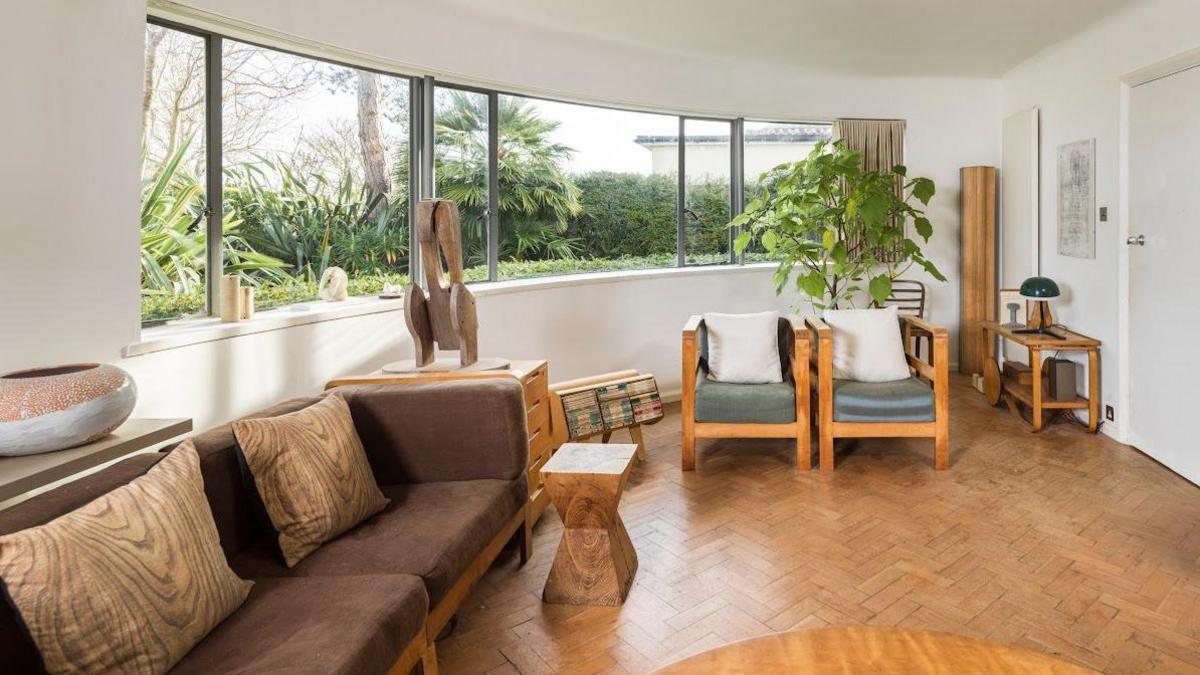
The interior of the former show home still boasts many of its original features
Architect Oliver Hill embraced his love for modernist design when he drew up plans for the open-plan home, built in 1935, in Warley Way, Frinton-on-Sea.
It was the show home for the Frinton Park Estate development, which was never fully completed.
The idea was to introduce ordinary people to modernist architecture, but only 40 houses were built on the 40-acre (16ha) seaside estate, of which 38 still stand.
The open-plan detached house has curved lines and has been designed with a focus on space and light.
Many original features, including curved walls, pine block floors and built-in cupboards have been retained.
Hertfordshire war memorials
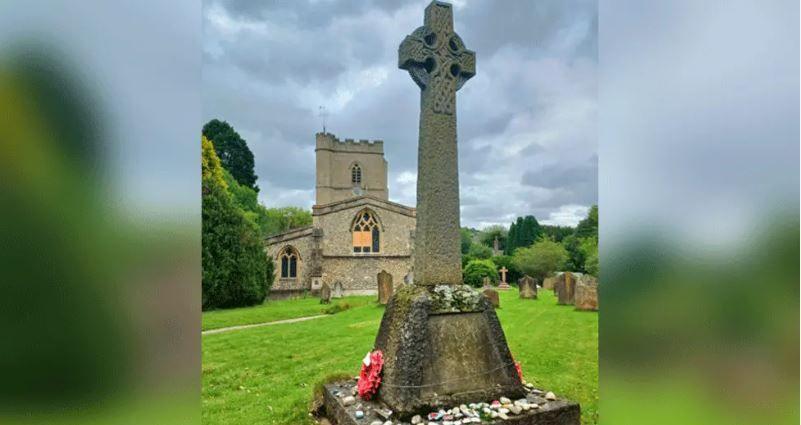
Northchurch war memorial stands in tribute to local victims from both world wars
Two village memorials originally built in tribute to Hertfordshire men who died in World War One received Grade II listings, ahead of Remembrance Day.
The monuments were unveiled in the 1920s, with more names added following World War Two.
Northchurch War Memorial, near Berkhamsted, is a focus of the churchyard for St Mary's Church and commemorates the sacrifices made by 46 men who lost their lives in World War One, and 13 in the later conflict.
At Hertford Heath, near Hertford, a memorial was unveiled in 1920 after villagers gathered at the church and proceeded to the decorated Celtic cross with the band of the 1st Hertfordshire Regiment.
It was dedicated to 34 men killed in Wold War One and was paid for by a churchyard fund and a woman named Florence Barclay.
The names of 10 men who died in World War Two were added later.
Norfolk helter-skelter
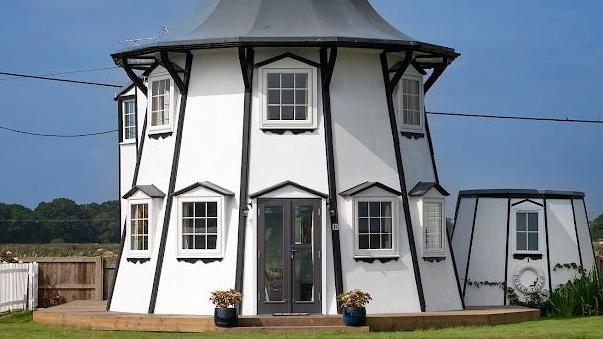
Well-known local landmark Dutch Tutch started life as a helter-skelter on the end of a pier before being moved to Potter Heigham
In Norfolk, five unique waterside properties - including a converted helter-skelter - were designated as Grade II listed.
The Dutch Tutch in Potter Heigham began life as a helter-skelter at the end of the Britannia Pier in Great Yarmouth.
After a fire on the pier in 1909, the lower half of the fairground ride was used to create a two-storey holiday cottage on the Norfolk Broads, while the top portion was used to create an outbuilding.
The other listed buildings included prefabricated structures made by the company that created Scott's Antarctic expedition huts and one of the only remaining eel setts in England.
Northampton bus office
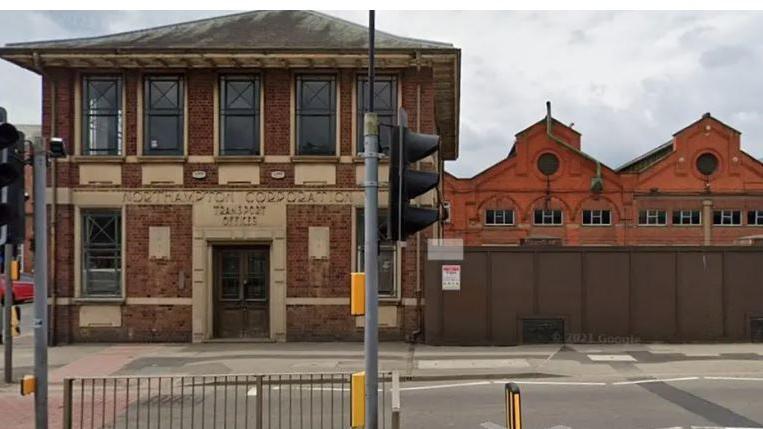
The former Northampton bus office has been given protected status this year
A bus depot office building in Northampton, been noted for its distinctive and eclectic design, received special protection this summer.
The office building at St James' tram depot and bus garage was built for the Northampton Corporation in 1933.
Historic England considered it as a "particularly good example of a municipal transport company's offices" in a nod to years gone by in everyday England.
The building - said to have also been a ticket office - was constructed as the town's red trams were in decline, just before its red buses then took over entirely in 1934.
The Grade II listing followed a Save the Depot campaign by Northampton Transport Heritage group, although the status only applies to the office building.
The last bus rolled out of the garage in 2013 and the site has been disused ever since.
In October, West Northamptonshire Council said lessons had been learned from selling off the depot which then had to be bought back for £3.3m - twice the original sale price.
It was sold in 2014 to shoe firm Church's which had planned to move there, before being bought back nearly a decade later.
Suffolk 'fantasy' islands
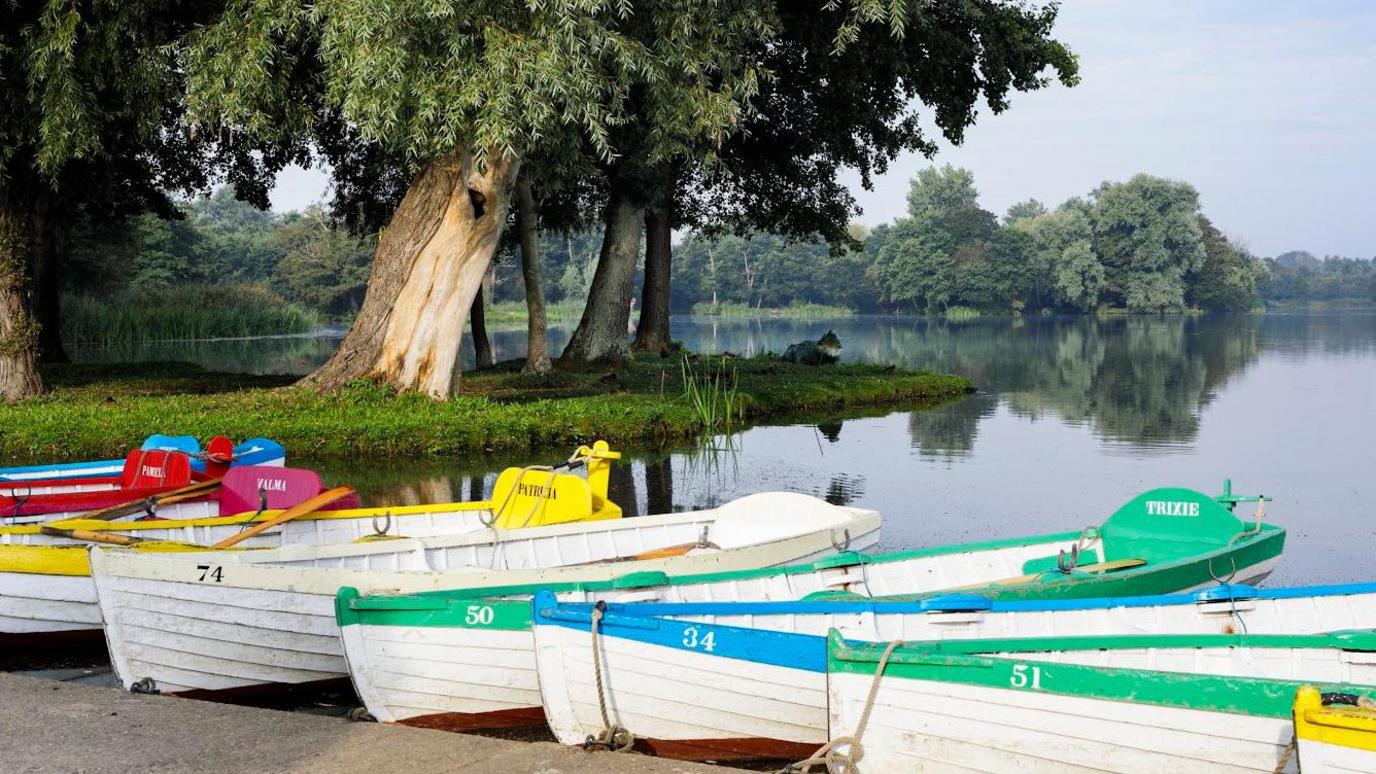
Thorpeness Meare was the brainchild of landowner Glencairn Stuart Ogilvie, who was inspired by the ideas of his friend and Peter Pan author JM Barrie
Five Suffolk parks and gardens have been protected, including a boating lake inspired by JM Barrie's Peter Pan and created by a friend of the author as part of a "fantasy" holiday village.
The Meare at Thorpeness was constructed so children could row or sail in shallow water, stopping at ornamental islands with names like the Pirate's Lair and Wendy's House.
Thorpeness was Britain's first purpose-built holiday village - developed from the small fishing village of Thorpe, inherited by landowner Glencairn Stuart Ogilvie - a friend of JM Barrie.
Abbot's Hall at Stowmarket's Food Museum, Crows Hall in Debenham, Staverton Park in Wantisden and the Walled Garden at the Royal Hospital School in Holbrook also received Grade II listed status.
Get in touch
Do you have a story suggestion for the East of England?
Follow East of England news on X, external, Instagram, external and Facebook: BBC Beds, Herts & Bucks, external, BBC Cambridgeshire, external, BBC Essex, external, BBC Norfolk, external, BBC Northamptonshire, external or BBC Suffolk, external.
- Published8 November 2024
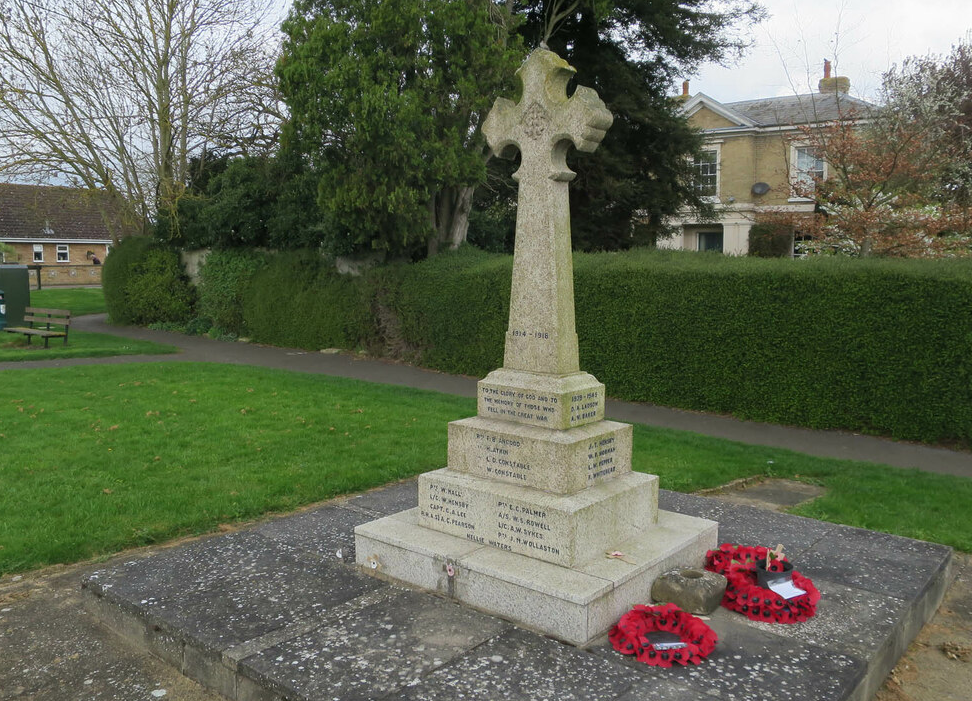
- Published17 October 2024
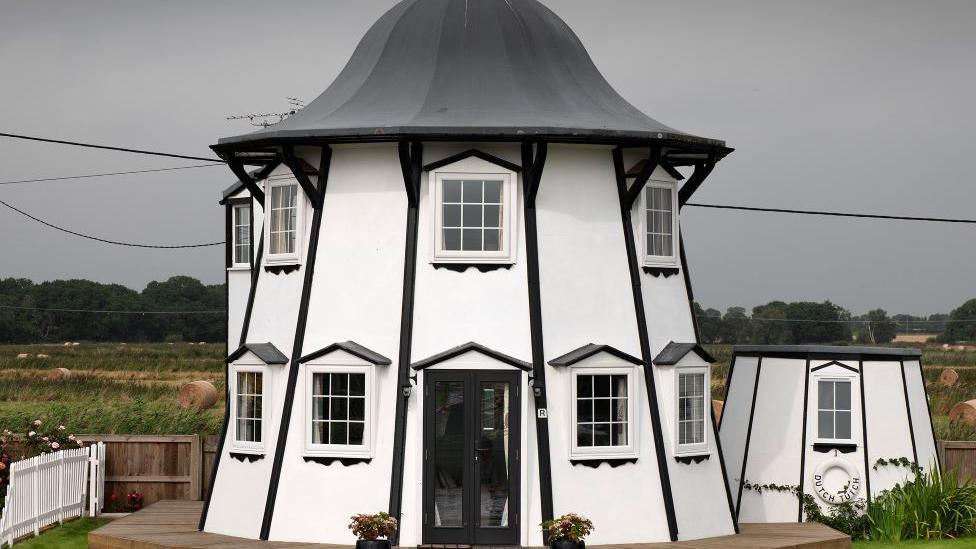
- Published31 July 2024
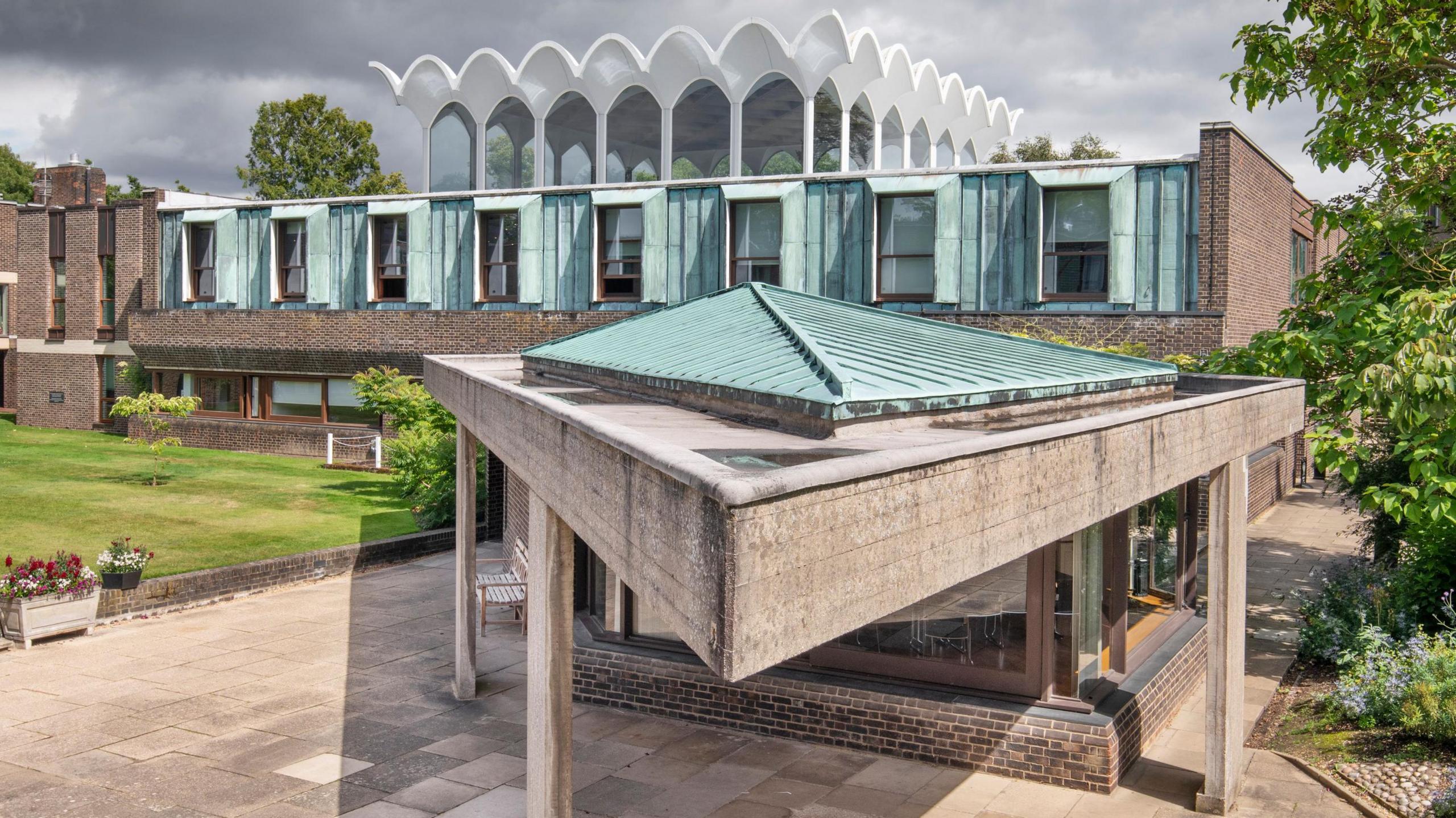
- Published29 February 2024
